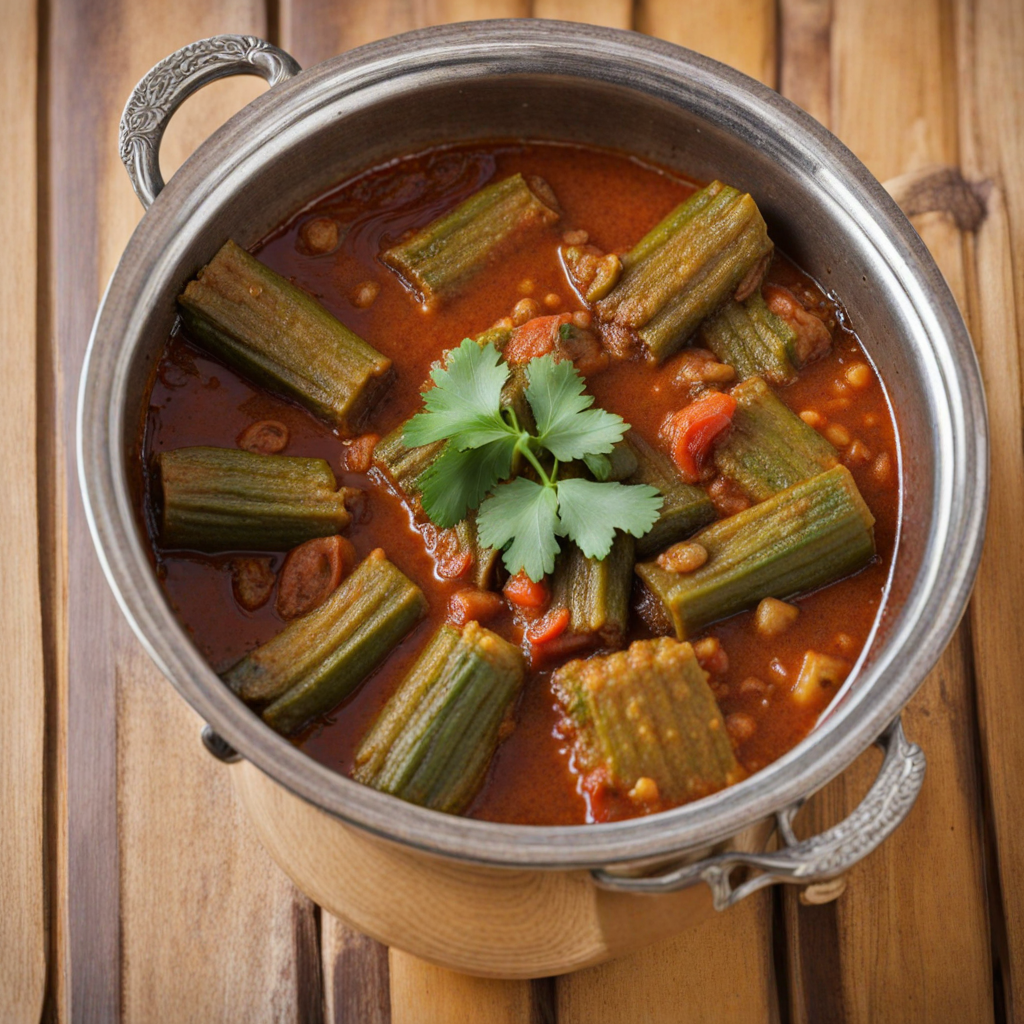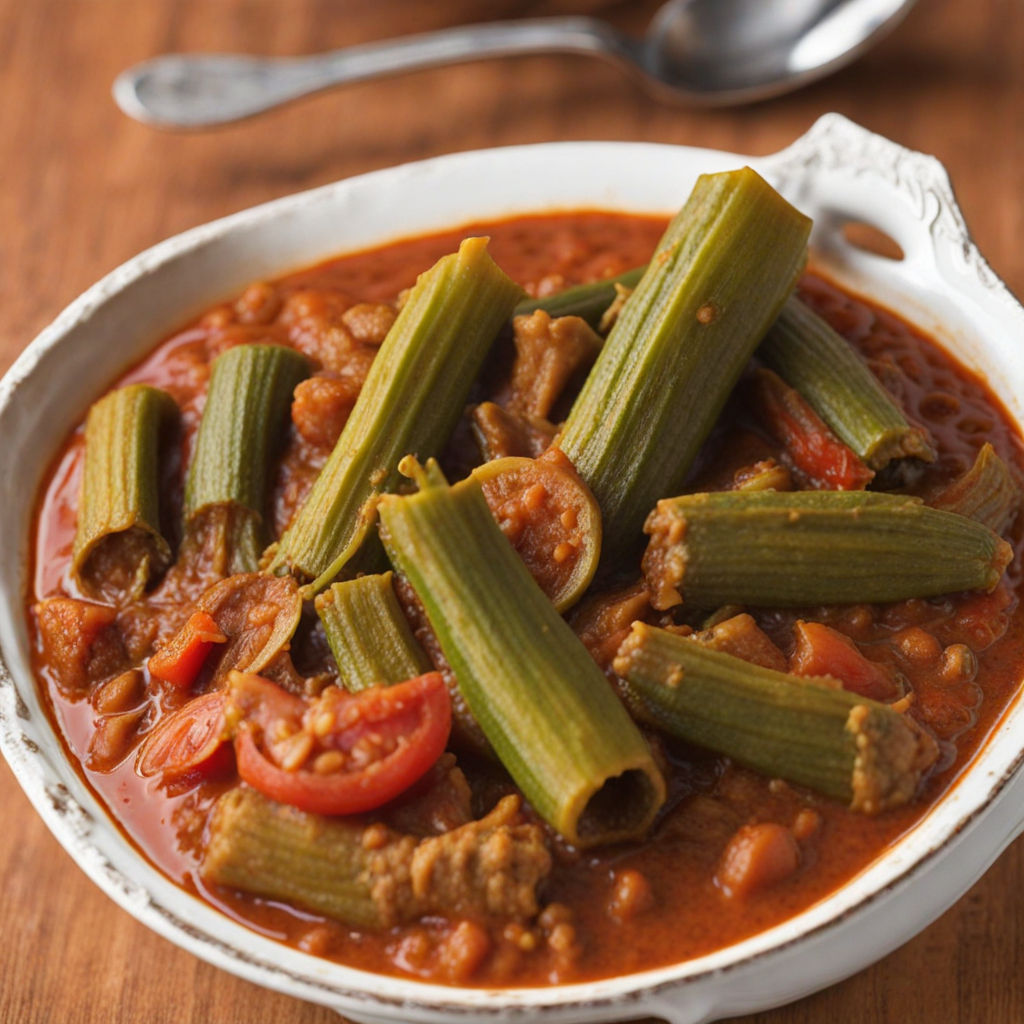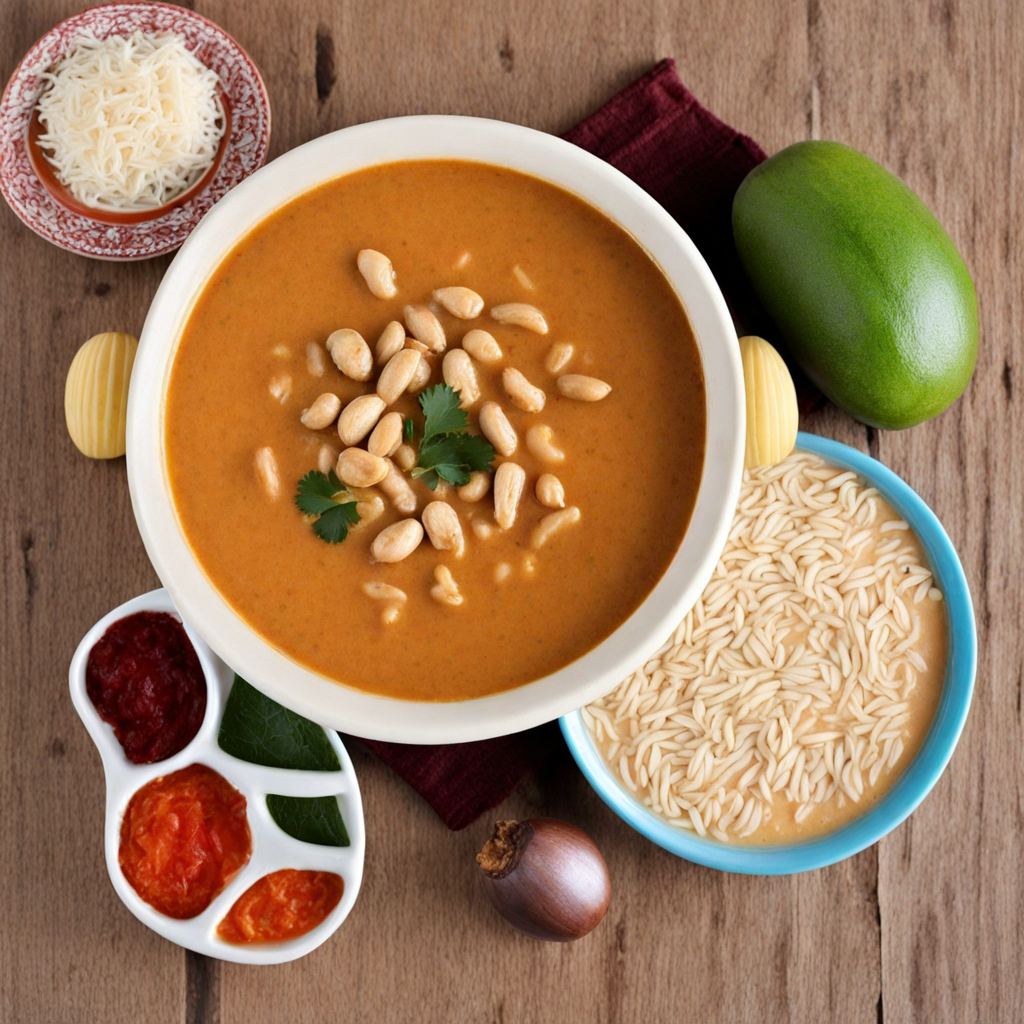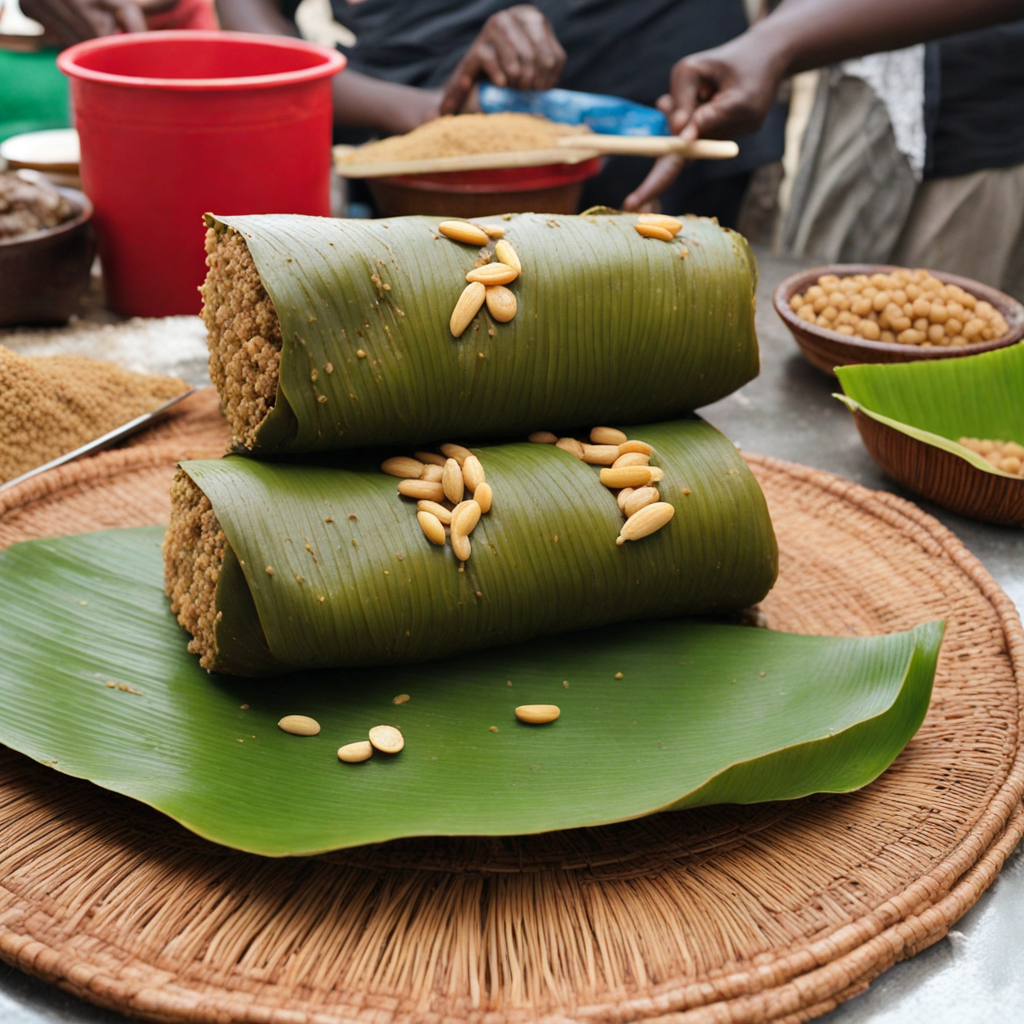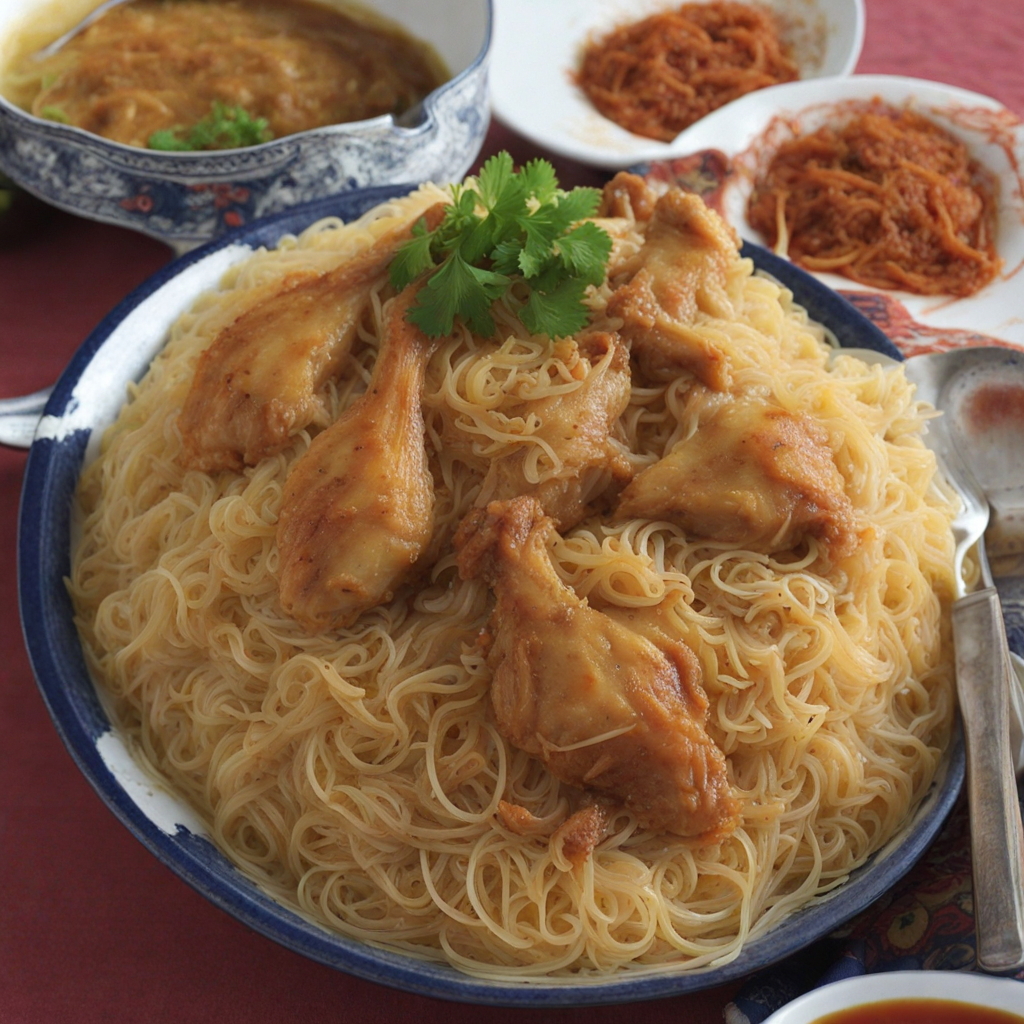Senegalese Okra Stew
Senegalese Okra Stew, known locally as "Maafe," is a vibrant and hearty dish that showcases the rich culinary heritage of Senegal. At its core, the stew features tender okra, which adds a unique texture and a slight sliminess that harmonizes beautifully with the other ingredients. The okra is typically simmered in a savory base made from tomatoes, onions, and a blend of aromatic spices such as ginger, garlic, and chili peppers. This creates a flavorful broth that is both comforting and invigorating, inviting you to savor each spoonful. The stew often incorporates a variety of vegetables, including carrots, bell peppers, and eggplant, which not only enhance the visual appeal of the dish but also contribute to its nutritional value. In some variations, protein sources such as chicken, beef, or fish are added, making it a satisfying meal that can cater to different dietary preferences. The balance of spices in Senegalese Okra Stew is key, as it embodies the warmth and earthiness typical of West African cuisine, with each bite revealing layers of flavor that are both complex and inviting. Served traditionally with a side of fluffy white rice or fufu, Senegalese Okra Stew is a communal dish that encourages sharing and connection. The rice absorbs the rich, spiced broth, while the okra retains its distinct flavor, creating a delightful contrast of tastes and textures. This dish is not just a meal; it’s an experience that brings together friends and family, celebrating the vibrant culture and culinary traditions of Senegal. Each bowl of Maafe is a tribute to the country's agricultural bounty and the communal spirit of its people, making it a must-try for anyone looking to explore new and exciting flavors.
How It Became This Dish
The Rich History of Sauce Gombo: A Culinary Treasure from Senegal #### Origins Sauce Gombo, a vibrant and flavorful dish that has become a hallmark of Senegalese cuisine, is rooted in the rich agricultural landscape of West Africa. The term "Gombo" refers to okra, a key ingredient in this dish, which is believed to have originated in Ethiopia and spread throughout Africa, the Middle East, and eventually to the Americas. The introduction of okra to Senegal can be traced back to the intercontinental trade routes that flourished during the 15th century, facilitated by the movement of enslaved people and the transatlantic slave trade. The dish Sauce Gombo is not just a culinary creation; it is a reflection of the agricultural practices, climate, and cultural exchanges that have shaped Senegalese society over centuries. The fertile soil of the Senegal River Valley, combined with a warm climate, has allowed for the successful cultivation of okra, alongside other staple crops such as millet, sorghum, and rice. #### Cultural Significance In Senegal, food is deeply intertwined with cultural identity, social structures, and communal practices. Sauce Gombo is often served as a part of communal meals, emphasizing the communal bonds within families and communities. Traditionally, it is served over a base of rice or alongside a starch like fonio or millet, making it a staple in the Senegalese diet. The dish is characterized by its thick, viscous texture, which comes from the mucilage released by the okra when cooked, giving it a unique mouthfeel that is both hearty and satisfying. The preparation of Sauce Gombo is also imbued with cultural rituals and practices. It is often made during significant family gatherings, celebrations, or as a comfort food during times of hardship. The sharing of food is a symbol of hospitality and friendship in Senegalese culture, and Sauce Gombo plays a pivotal role in these social interactions. Moreover, Sauce Gombo is often prepared with an array of other ingredients, including fish, meat, vegetables, and spices, which reflect the local agricultural bounty and the diverse culinary influences that have permeated the region. Ingredients such as dried fish, chicken, or lamb are frequently added, along with spices like chili pepper, ginger, and garlic, which enhance the dish's flavor profile. #### Development Over Time As Senegal's culinary landscape evolved, so too did Sauce Gombo. The dish reflects the influences of various cultures and peoples that have settled in the region, including the Wolof, Serer, and Toucouleur. The Wolof people, one of the largest ethnic groups in Senegal, have particularly influenced the preparation and consumption of Sauce Gombo. The incorporation of local ingredients and cooking techniques has allowed the dish to adapt while still maintaining its core identity. During the colonial period, the introduction of new ingredients and cooking methods further transformed Sauce Gombo. The French colonial influence brought new spices and cooking techniques that blended with traditional Senegalese practices, creating a dynamic fusion of flavors. This period also saw the introduction of European culinary practices, which influenced the presentation and consumption of Sauce Gombo, as it began to gain recognition beyond local borders. In the post-colonial era, Sauce Gombo continued to evolve, reflecting Senegal's journey of self-discovery and cultural affirmation. The dish has become a symbol of national pride, representing Senegal's rich culinary heritage. As globalization has increased, the flavors and techniques associated with Sauce Gombo have been embraced by chefs and home cooks alike, both locally and internationally. Contemporary Senegalese cuisine has also seen a resurgence of interest in traditional dishes like Sauce Gombo, as chefs experiment with modern interpretations while remaining rooted in cultural authenticity. The dish has found its way onto menus in upscale restaurants, where it is celebrated for its unique flavors and the story it tells about Senegalese culture and history. #### Global Influence and Modern Adaptations Today, Sauce Gombo has transcended its regional origins and has gained recognition in the international culinary scene. As the diaspora communities have spread around the globe, they have brought their culinary traditions with them, allowing Sauce Gombo to find new audiences. In urban areas with significant Senegalese populations, such as New York, Paris, and London, Sauce Gombo is a cherished dish that connects individuals to their heritage and serves as a culinary ambassador of Senegalese culture. Modern adaptations of Sauce Gombo often reflect the changing dietary preferences and health considerations of contemporary society. Health-conscious cooks may use less oil or substitute ingredients to create vegan or gluten-free versions of the dish, while still retaining its essence. The versatility of Sauce Gombo allows it to be reimagined without losing the flavors that make it so beloved. #### The Future of Sauce Gombo As we look to the future, Sauce Gombo remains a testament to the resilience and adaptability of Senegalese cuisine. It serves as a reminder of the deep connections between food, culture, and history. Efforts to preserve and promote traditional cooking methods, along with the increasing interest in global cuisines, will likely ensure that Sauce Gombo continues to thrive. Culinary festivals, cultural exchanges, and cooking classes focused on Senegalese cuisine are becoming more common, allowing chefs and enthusiasts to explore the depths of Sauce Gombo and its significance. Social media also plays a crucial role in this culinary renaissance, as food bloggers and influencers share their interpretations of Sauce Gombo, introducing it to wider audiences and sparking interest in its rich history. In conclusion, Sauce Gombo is much more than just a dish; it is a celebration of Senegal's agricultural heritage, cultural exchanges, and community bonds. Its evolution over time reflects the dynamic nature of culinary traditions and the importance of food in shaping identity and fostering connections. As Sauce Gombo continues to be enjoyed and adapted around the world, it remains a poignant reminder of the flavors and stories of Senegal, inviting all to partake in its rich history.
You may like
Discover local flavors from Senegal


